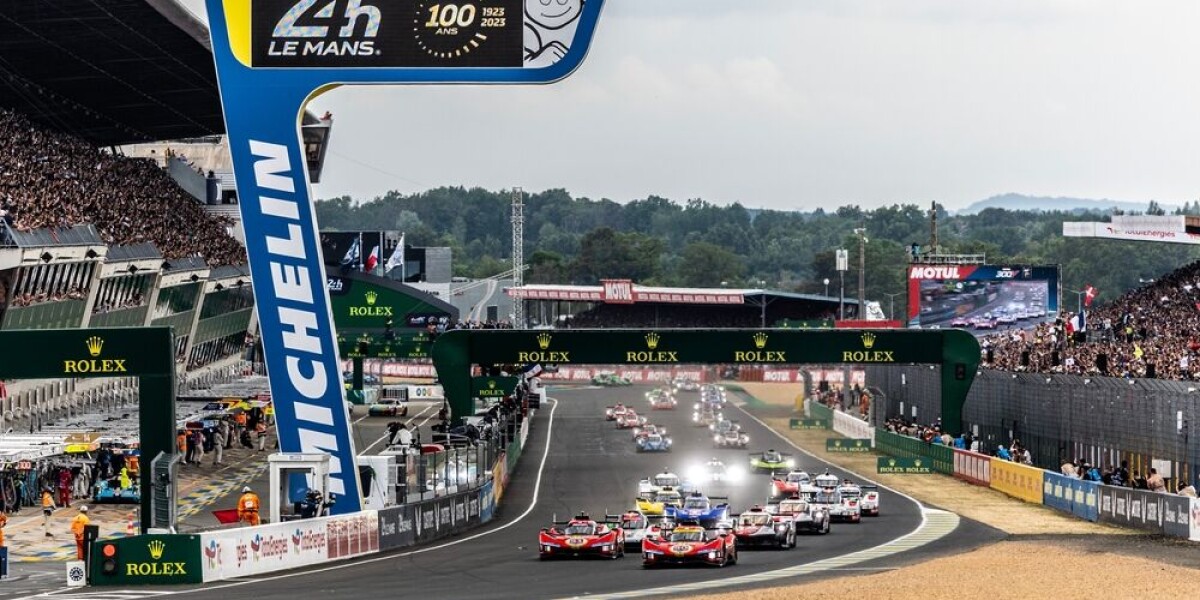
Tradition: 100,000 brits expected at le mans 24 hour race
- Select a language for the TTS:
- UK English Female
- UK English Male
- US English Female
- US English Male
- Australian Female
- Australian Male
- Language selected: (auto detect) - EN
Play all audios:

THE VENERABLE COMPETITION TAKES PLACE IN JUNE CONTINUING A TRADITION THAT DATES FROM THE 1920S - AND A A BENTLEY WIN DO YOU RECEIVE THE CONNEXION'S FREE WEEKDAY NEWSLETTER? Sign up here
British fans are expected to cross the Channel in droves once again for the prestigious 24 Hours of Le Mans race, which takes place in June, continuing a tradition that dates from the
1920s. The circuit in Le Mans, Pays de la Loire, is expected to host up to 100,000 fans from the UK for the racing from June 12 to 16 – despite the fact that no British cars will race in the
fastest and most prestigious ‘hypercar’ section this year. Aston Martin and McLaren will fly the Union flag in the next class down. Read more: New Hypercar class debuts at French 24 Hours
of Le Mans race 'THE BENTLEY BOYS' After World War One, motorsport took off across Europe, but in Britain it was boosted by the so-called Bentley Boys, a group of young, very
wealthy motorists who favoured Bentley cars. They gathered around Woolf Barnato, heir to a South African gold and diamond fortune. The first Le Mans race, organised by the Automobile Club
de l’Ouest, was dominated by French cars but one racing Bentley participated. When, a year later in 1924, a Bentley won the race, it sparked huge interest in the UK. French carmaker
Lorraine-Dietrich won in 1925 and 1926, years that saw the grid become international, with Italian, German, US and Spanish manufacturers all taking part, but Bentley won again between 1927
and 1930 – thanks largely to the efforts of the Bentley Boys who, after 1929’s financial crash, were able to keep racing while many smaller manufacturers were ruined. Other British cars,
including Lagonda, Alvis and Aston Martin, soon began to enter the race for the publicity it brought them back in the UK, and in 1935 a Lagonda won. By then, the annual invasion of British
race fans was established and Le Mans even opened a golf club, aimed largely at British players who came to the town for the racing. After World War Two, racing started again, with UK fans
continuing to come every June. Jaguar won five races in a row in the 1950s and then Aston Martin in 1959, before a drought in British success until 1988, when a Jaguar won again and a crowd
invaded the track to celebrate. INTO ITS SECOND CENTURY Germany’s Volkswagen took over Bentley in the 1990s, and in 2003 Bentley won again, followed by a memorable parade of old and modern
cars through the streets of Paris. In 2023 the race marked its 100th anniversary, and had sold out six months before the first cars rolled out onto the tarmac. Read more: 100 years of Le
Mans: what makes this French car race so special? Le Mans in June does not have guaranteed sunshine, but many British fans still brave the unpredictable Sarthe weather to sleep in flimsy
tents as the race enters its second century. Not all are necessarily interested in the racing. Instead, it is party time, with the mostly male British fans drinking, dancing, making noise
and giving the race its unique atmosphere – just as their fathers and grandfathers did before them.
